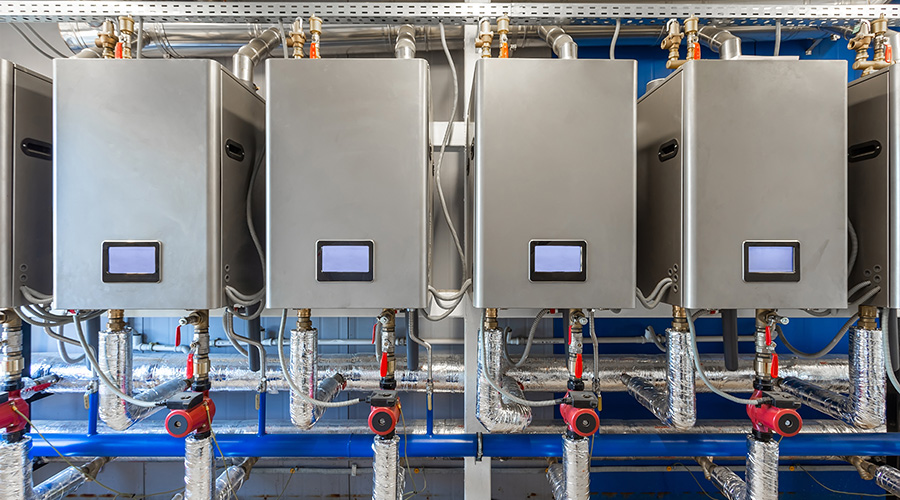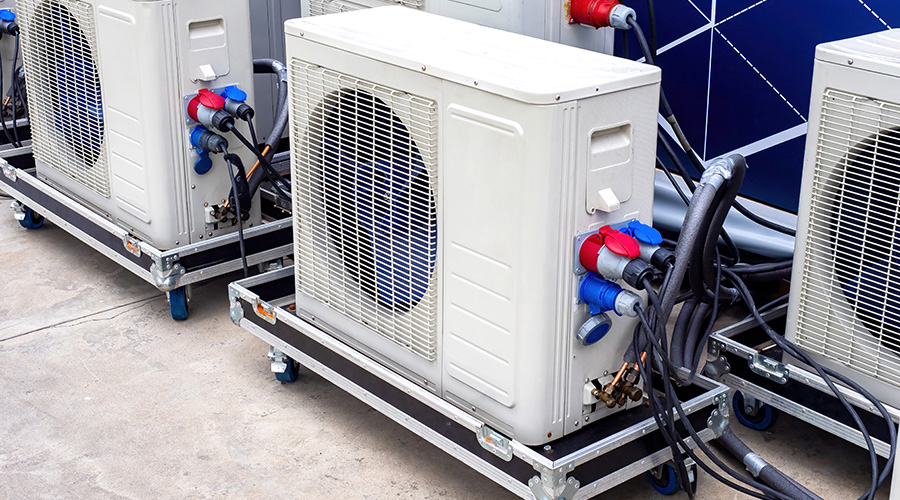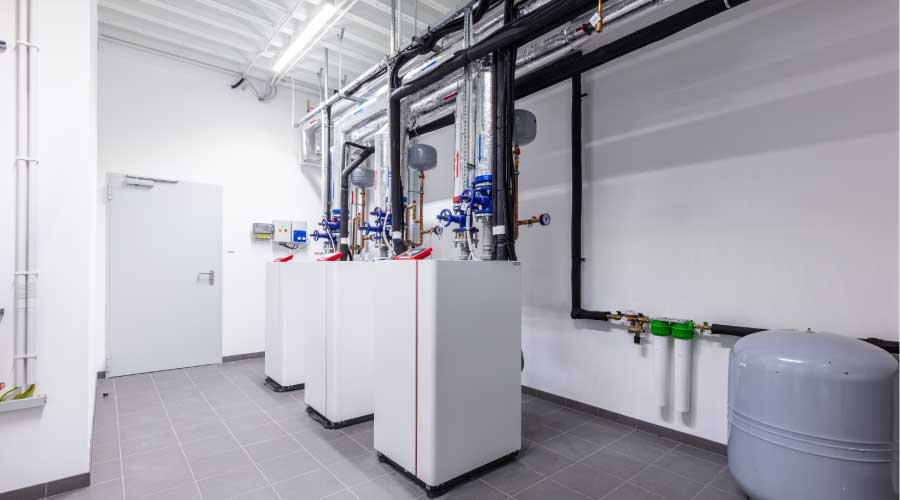Four-pipe Fan Coil Unit Systems: Is It Right for Your Facility?
When evaluating this option, be sure to consider the type of facility and to incorporate advanced features.
A four-pipe fan coil unit consists of a fan, chilled water cooling coil, hot water heating coil, and air filter. Fan coil units provide conditioned air to the area served by recirculating space air through the coils. Fan coil units are designed to provide dehumidification of the area served; however, the amount of dehumidification provided can be limited by increasing the chilled water supply temperature. Fan coil units can mix both unconditioned outdoor ventilation air or conditioned outdoor ventilation air with the recirculated space air; this allows for various outdoor ventilation air delivery and conditioning options. Outdoor ventilation air can be either coupled (i.e., delivered upstream/in series with the fan coil unit) or decoupled (i.e., delivered directly to the area served/in parallel with the fan coil unit). Fan coil units also come in many different configurations which allow for floor mounting (exposed or concealed), ceiling mounting, and ducting to serve multiple spaces.
Four-pipe fan coil unit systems offer several advantages:
• The four-pipe fan coil unit system is cost-effective from a chilled water and heating water pumping perspective. Because the unit transfers heat to the space using forced convection, the coil heat transfer area required is reduced as compared to a chilled beam, which transfers heat to the space using primarily natural convection. The reduction in coil heat transfer surface area results in lower coil water side pressure drop, thus lower pumping energy. Forced convection heat transfer also yields higher water side delta T which also results in lower pumping energy.
• The fan coil unit entering air conditions remain relatively constant as the coil load is turned down and the water side delta T increases under part load conditions, resulting in additional part load pumping energy savings.
• The system requires minimal air side infrastructure because central air systems are only required for outdoor air ventilation. The result is reduced floor space requirement for central air handling equipment and vertical duct risers.
The drawbacks of four-pipe fan coil unit systems include:
• Due to the filter and condensate pan being located within the unit, the system requires additional maintenance for filter replacement and condensate pan cleaning.
• Because of the unit fan, the system consumes more fan energy as compared to a chilled beam system, which has no terminal unit fan.
Evaluating Fan Coil Units: Right Facility, Right Features
All facilities are unique and their system selection should be carefully evaluated from both qualitative and quantitative perspectives. In many cases, a four-pipe fan coil unit system is an appropriate system selection; in other cases, it isn’t. Facilities where a four-pipe fan coil unit system should be strongly considered would include these characteristics:
• Larger facilities such as college campuses, large residential complexes, large hotels, military facilities where use of chilled water cooling is life cycle cost effective.
• Facilities where most spaces will have high sensible heat ratios (i.e., relatively low occupancy density such as housing/residential or office).
• Facilities with minimal occupied interior space which would require winter cooling (an all air system with economizer is preferred for serving occupiable interior areas).
• Facilities where individual room temperature control is required.
An example facility that would include all these characteristics is a large student housing facility served by a campus chilled water plant.
To optimize the fan coil unit system efficiency, the following features could be applied:
• Dedicated outside air unit(s) with exhaust heat recovery wheel and low dew point supply air to provide decoupled outdoor ventilation air and improved humidity control. The dedicated outside air unit cooling coils should be selected for higher delta T to minimize overall system pumping energy.
• Demand ventilation control via two-position single duct air terminal units integrated with room occupancy controls.
• High efficiency chilled water plant including high efficiency water cooled chillers, variable speed / variable flow chilled water pumping.
• Local or centralized heating water plant using condensing boilers and variable speed primary pumping.
• Fan coil units with ECM motors and staged fan speed control.
The graph below represents actual building energy modeling results for a large higher education housing facility using a four-pipe fan coil unit system with many of the features described above. The modeling results demonstrate an energy cost savings of approximately 42 percent as compared to the ASHRAE 90.1 – 2010 Baseline Building. These results exceeded the project’s energy goals and mandates. Similar results have been realized for other projects using a four pipe-fan coil unit system.
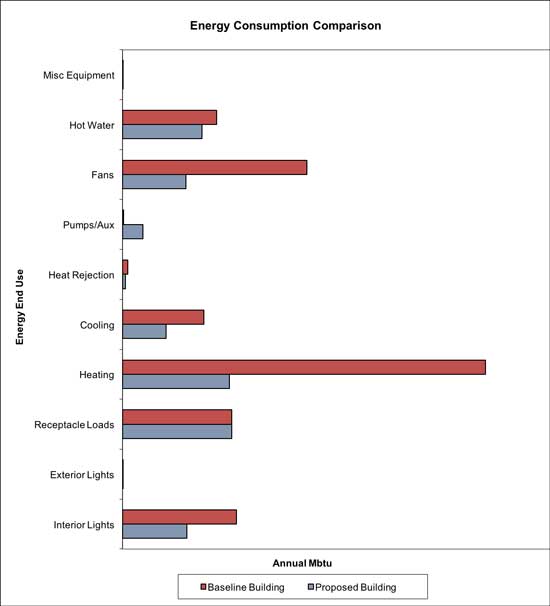
Advances in HVAC equipment design and controls technology, coupled with mandates for increased energy efficiency, have led to HVAC terminal unit designs such as chilled beams and DOAS terminals which are thought of as state-of-the-art systems. The same technologies and design strategies incorporated into these system types can also be applied to a four-pipe fan coil unit system, resulting in system efficiencies that meet and exceed today’s energy efficiency goals and mandates.
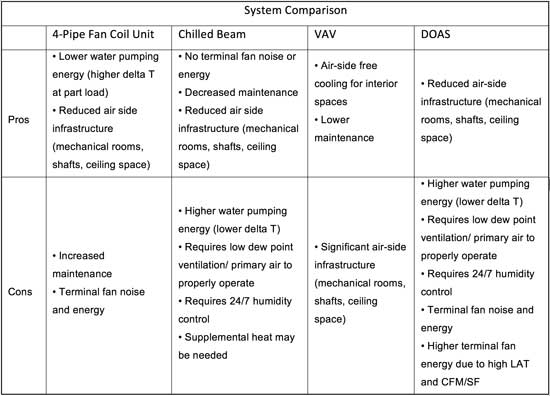
William P. Ljungquist (william.ljungquist@atkinsglobal.com), PE, LEED AP, is regional engineering manager, architecture engineering, for Atkins. The energy consumption comparison in the article was produced by Atkins North America for the higher education housing facility using a four-pipe fan coil system.
Related Topics:













